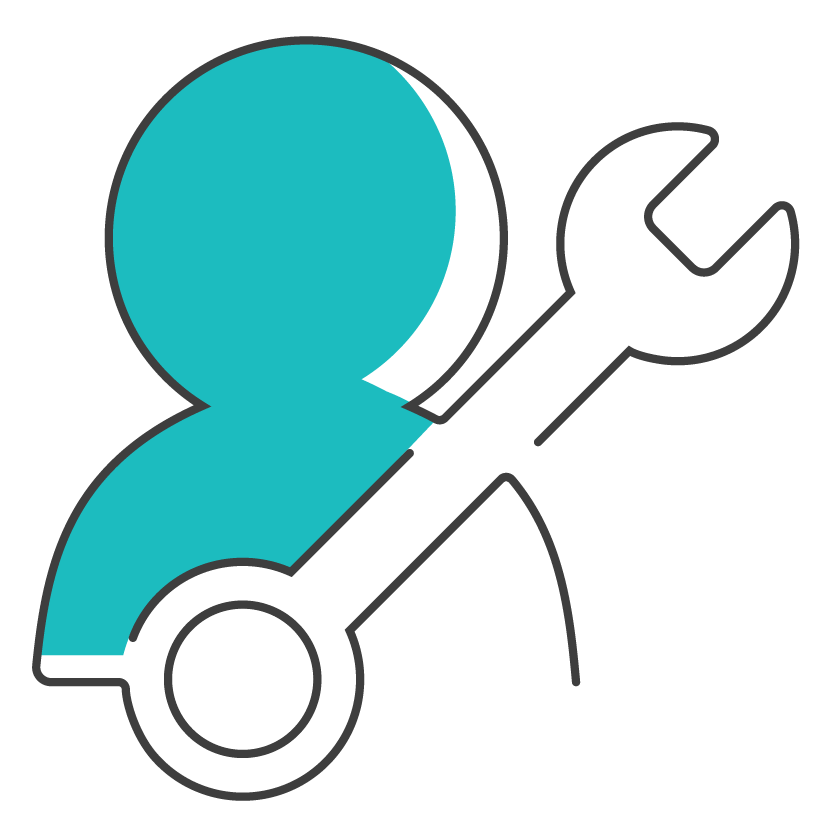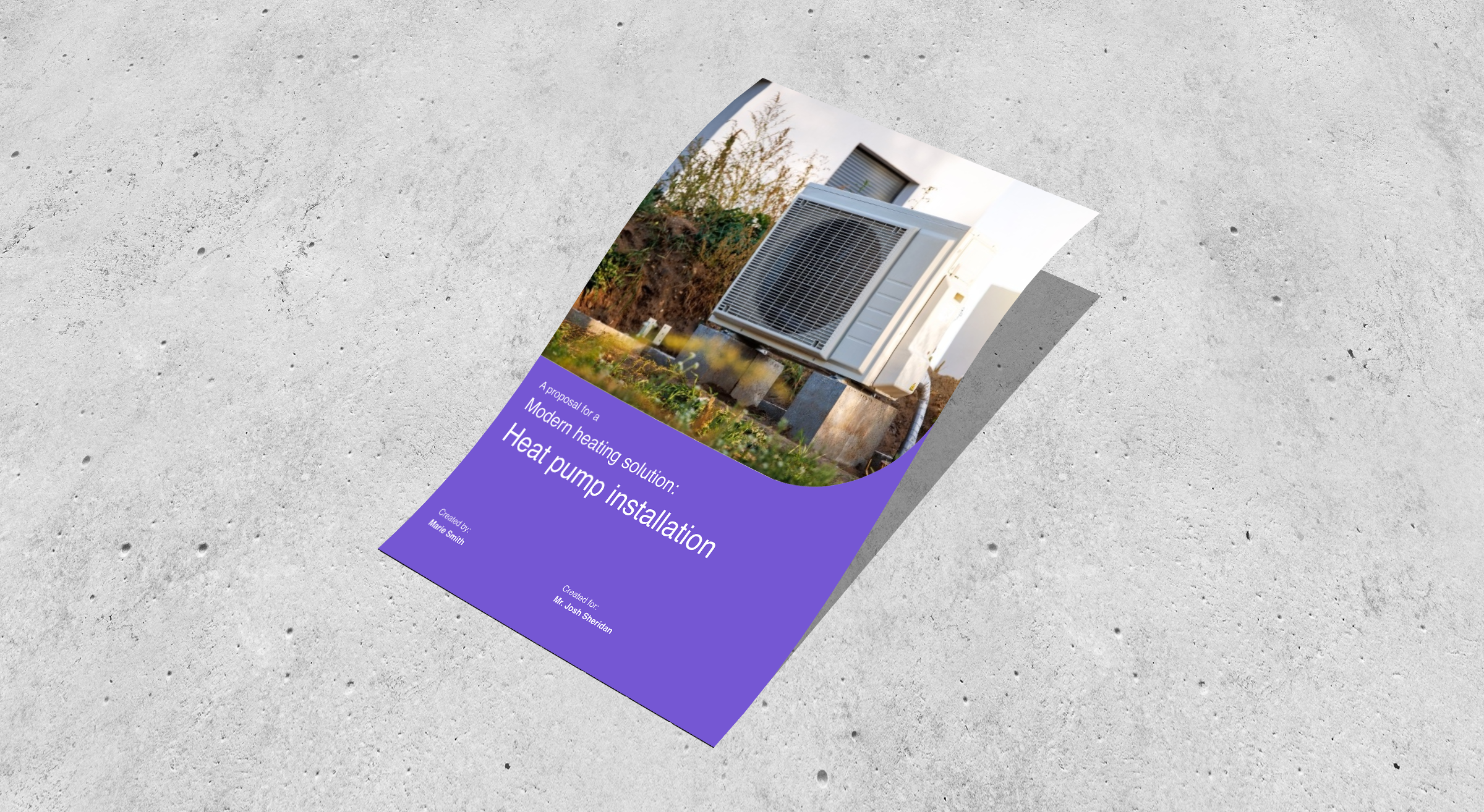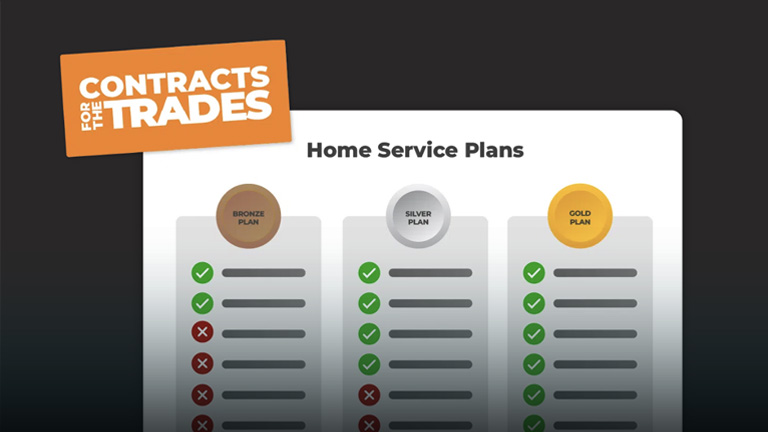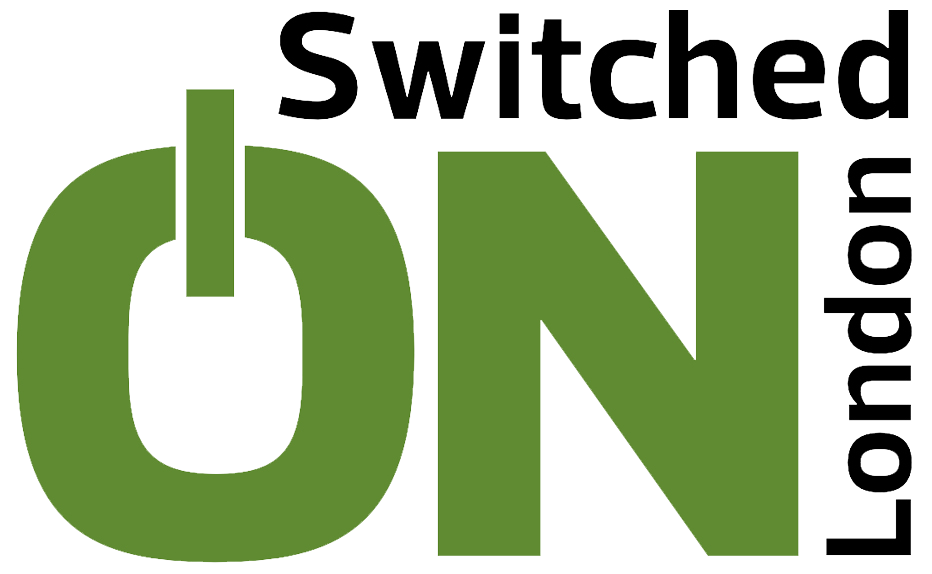Building a Recruitment and Retention Plan as a Plumber
March 16, 2022 | Read: 14 minutes

Building a recruitment and retention plan is one of the smartest decisions that a plumbing business can make.
After all, attracting and hiring new staff itself is a significant challenge for any trades businesses. That’s why it’s important to do all you can to ensure your staff stick with you, too.
While no recruitment plan will guarantee staff retention, building a dedicated recruitment and retention plan will help keep staff around for longer.
Not only that, but a good retention plan will give you a better chance of holding on to the knowledge you’ve gained from long-serving engineers, too. This will make it easier to get new plumbers up to speed and protect your business when staff do inevitably move on or retire.
Let’s look at the the critical steps needed to build an effective recruitment and retention plan for your plumbing business:

Why do I need a recruitment and retention plan?
Hoping for the best will only get you so far. If you want to grow your team and encourage staff to stay at your plumbing company, then you need a strategy.
The same goes for recruitment.
Having a plan will help you methodically approach hiring staff and give you the best chance of finding great talent. Without one, you won’t get far.
Whether they’re new or long-serving employees, people will need incentives and a clear understanding of your company’s vision: it gives them something to connect to. Part of your recruitment and retention plan, then, should be to focus on outlining what these incentives look like.
You’ll need to cover the obvious like salary and perks, but don’t ignore how you plan to help develop an engineer’s career, or provide growth opportunities for other members of staff. At the very least, an outline can help them plan their future and ideally: that future includes you After all, if they see you’re planning ahead it can give them confidence to remain.
Workforce development starts with recruitment and continues with a full cycle of development, growth, and retention. […] It is also a sign of a growing and adaptive business.
Field Technologies Online
At it’s core, a recruitment and retention plan is all about about managing growth. But growth takes time and money…
The Real Cost of Recruitment and Retention
We’re not just talking about price here (though it is a big part of it). While yes, one of the biggest issues you’ll face is the cost of turnover and recruitment, there’s also the cost of time to consider.
The longer you go without the staff you need, the more job opportunities can pass you by, or the harder your remaining staff have to work, too.
Financially, it can be a struggle, with Fix Radio reporting that:
Recruitment costs for trade businesses have risen by at least 30%” and of the businesses they surveyed, “40% said they’ve had problems with recruitment and fulfilling roles.
How much exactly? Well:
Losing an employee in the first year of their tenure can cost your company up to three times the person’s annual salary.
Achievers
New talent doesn’t come free and depending how you go about recruitment, like using an agency, you could spend as much as 20-30% of an employees salary in recruitment fees (Undercover Recruiter).
But that’s not all… Alongside recruitment expenses, you’ll also have annual salaries, bonuses, national insurance, pension funds, training costs, office equipment / an engineer’s gear, and other costs like software to consider.
Throw into the mix that there’s an an ageing workforce and fewer apprentices being trained and it’s easy to see how there are more than a few costly challenges affecting recruitment across the industry.
For the sixth year in a row, skilled trade positions (electricians, carpenters, welders, etc.) were the hardest roles to fill, followed by drivers and healthcare professionals.
FieldServiceEU
What’s to be done?
Throwing money at the problem can’t (and isn’t) the only solution. That’s why a concrete strategy is needed to ensure that hiring and onboarding new hires goes well.
Many businesses are also turning toward tech to help their staff work more efficiently and with less stress, such as job management software.
Of course, there’s still a balance as you’ll need to hire qualified, capable workers as your business grow. Fortunately, that’s where a recruitment and retention plan really comes into it’s own. Let’s explore more about what that might look like:
Four Steps to Building your Recruitment and Retention plan:
Now that you know more about the challenges, let’s look at what to do:
1. Succession Planning
Every plumbing company, big or small, needs to consider succession planning. What do you do when people leave? Unfortunately, very few do it well.
No matter how good an employer you are, there will always be competitors who will try to poach your top talent, including your best engineers.
The prospect of increased pay, joining a prestigious firm, or getting more responsibility is tempting. It could even work the other way around, with staff leaving more prominent companies to join smaller, less stressful independent businesses who promise flexible hours and offer an improved work/life balance.
Multiple studies reflect the fact that providing flexibility to employees results in fewer sick hours, greater employee happiness, higher productivity and less stress.
Achievers
A succession plan can help mitigate those risks, no matter which way it goes.
What is a Succession Plan?
A Succession Plan will cover what happens when a colleague leaves. With one, you can better prepare for when they move on or retire. For instance, if you identify your team’s skillsets and have an awareness of the experience you’ll be losing, you can more quickly plan how to fill that hap
On top of that, a plan should also cover how you collect and retain information from staff, so it’s easy for them to handover or train other team members on their responsibilities more quickly.
The more you cover, the easier it will be for staff to transition into new roles. You’ll find that when someone does move on, a Succession Plan can help to reduce stress, especially because expectations are clearly outlined and procedures in place. There’s no mad scramble to cover your bases.
Of course, without a policy, you’ll not only waste a lot of your own time and that of your employees–but it could seriously impact the customer relationships you’ve worked so hard to build. You can hope for the best, but you should always plan for the worst.
2. Handover of Responsibilities
While a Succession Plan covers the theory, there still needs to be a practical handover of responsibilities. Your recruitment and retention plan should cover how this will take place.
This approach may differ depending on whether it’s a plumber who’s leaving, or office staff. So let’s explore both:
Working with your engineers:

An engineer who leaves will likely have outstanding jobs scheduled for completion after their leaving date. You need to plan that handover and ensure jobs are completed and that, if there will be delays, customers are informed with a good amount of time.
For a smooth handover, it might mean introducing a new engineer to the customer, especially if a professional relationship already exists. It could be that John, your senior electrician, is retiring, and he’s known the Fitzpatrick family for donkey’s years!
Allowing them to say “farewell” and introduce his replacement is an excellent opportunity to build on an existing customer relationship and show respect for the work that’s getting done.
With a handover process in place, work can carry on smoothly and fewer resources will be wasted, too. Scheduling jobs and moving them will also be easier if you’re using dynamic job scheduling software. This way, jobs and all their details can be easily swapped with little fuss and absolutely no information being lost, too.
Working with your administration staff:

Many trade businesses have a few admin staff who’ve been doing the same job for years and developed their own way of doing things. When they need to retire or move on to another job, training a new person is challenging, especially if they’re using notes or spreadsheets.
Fortunately, field service management software has removed the need for someone to remember or record every appointment and service reminder by hand. Much like dynamic scheduling, a database of information makes it easier to onboard new employees and give them access to everything they need to know.
At the same time, it can be easier to weather periods where you’re understaffed by using tools that help everyone work more efficiently, whether it’s through booking jobs or automated invoicing to make chasing payments easy. This way, you’re not losing customers because of admin inefficiencies or wasting time chasing down debts.
3. Review Salaries and Consider Incentives
Money is a motivator, it has to be said.
If you’re finding that young engineers are leaving after just one or two years because of lucrative offers elsewhere, you may need to consider if you’re doing enough to keep them around. That includes pay, but also additional incentives that we’ve touched on: like clear career progress:
41% of employees say that they would leave their present companies if they found a position that offered better career advancement
Achievers
It may be that competitors are offering a higher salary and nothing’s more frustrating than training up new talent, only for someone else to reap the benefits of their expertise.
It’s safe to say that reviewing your salary and bonus schemes could help in attracting and retaining staff. But of course, throwing money at the problem isn’t always viable, but it’s why pricing your services and creating a sustainable is so important. With better insights to your cash flow, you can more confidently forecast and make room for hiring and training.
As we said, money isn’t the only motivator, but if you’re staff feel valued, well rewarded, and like there’s room for them to grow, then they’re more likely to stick around.
4. Is it time to reorganise your team?
Looking internally at how your business is run can be difficult and uncomfortable, but this self-reflection is incredibly important. Doing so can help you identify if there’s a problem.
For example:
“One manager with poor people skills can do damage to the culture and effectiveness of a company in a short period of time.”
Maricopa County CIO, David Stevens
This can lead to a multitude of issues.
For instance, if an employee feels like their manager is not supporting them, they may leave, or if they feel that their team isn’t being led practically, it can be demotivating.
Alternatively, someone might feel as though they’re being micromanaged. In these cases, it’s important to ensure that even your office promotes Mental Wellness.
However, you won’t learn anything if you’re not taking the opportunity to talk to staff. The same applies to collecting online reviews from customers. Only by collecting feedback and acting on what’s said will you be able to adapt your business for the better.
How Do We Improvement Employee Retention?
As mentioned, succession planning could help here. For instance, in the plan, identify ambitious engineers who could step up and support the management team.
Not only do you reward these employees, but you can relieve pressure on other staff, too.
In addition, you could consider strategies that help you learn from your colleagues. For instance, conduct 1-1 meetings during their notice period and have an exit interviews to collect their feedback.
When an employee does quit (but ideally beforehand), it’s well worth getting their feedback. They may indicate that specific pressures were causing them stress or even putting them (and perhaps others) off from staying.
Pressures and concerns could be straightforward, like their pay, hours, or the tools they don’t have to do their jobs. Alternatively, it might be something more complex. These could include issues with management or rapport with another employee. It’s not always money, but people cite reasons like these when they leave a job.
You’ll also want to know about these issues sooner rather than later so you can open a dialogue and take steps to implement changes as appropriate.
Make sure you include regular employee one-to-one discussions. However, be ready to hear some hard truths. It doesn’t get more honest than in an exit interview, where an employee may seize the opportunity to give sincere but direct feedback.
Managers and business owners can often be unaware of their staff’s feelings. What a manager feels to be true versus what their workers think is often different!
“60% of managers reported that they provide their employees with a clear path for advancing their careers, while only 36% of workers felt that this was true”
Achievers
For more on exit interviews, check out this excellent article from Gallup. Otherwise, take a look below for important steps to take when collecting feedback from employees.
Essential steps to build a plan:
You could consider taking some of the following actions, highlighted by WeekDone:
- Give more praise and recognition: Many people quit because of a lack of appreciation.
- Set clear objectives and goals: Results are only as strong as your objectives.
- Be future-driven: Using a management technique like PPP— Progress, Plans, Problems—be aware [and guide] your teams’ plans.
- Seek input and ideas: Your team has brilliant ideas; learn to ask.
- Give continual feedback: There is a correlation between employee engagement and periodic feedback.
- Measure satisfaction: you can manage only what you measure. By speaking with lots of staff, you can more accurately measure satisfaction.
- Ask about emotions and attitudes: You may be surprised by what you learn.
- Save time in meetings: One of the biggest employee motivation killers is wasting time.
- Don’t be too pessimistic: To keep your people happy and motivated, be positive and lead by example.
- Communicate openly: Share your weekly plans and thoughts, encouraging an open atmosphere.
- Get to know each other: Team building activities are an often-overlooked perk that engages employees and boosts their morale.
Start building a recruitment and retention plan
The advice above is flexible for big and small organisations alike. Of course, it relies on you to listen to your employees. Only by listening can you create a plan that fosters open communication and helps you attract new employees.
At the same time, you should encourage staff to give feedback. When they’re included, they’ll feel more content to stay and help you build a better workplace for everyone.
The emotional, financial, and human impact of building a recruitment and retention plan will lead you to value new employees. With a plan, you can help them develop their careers and grow within your business:
- Spend a year collecting the voluntary turnover figures for your organisation. Get a sense of how turnover fluctuates throughout the year.
- Calculate voluntary turnover for high performers, as this has the most significant negative impact on your business.
- See if there are any trends, such as seniority and experience, age group, gender, and role (e.g. engineers and office staff).
- Look through your exit interviews for trends on why people leave.
- Determine where the voluntary turnover rate spikes and if the turnover is acceptable or unacceptable.
Ultimately, each organisation needs to decide what voluntary turnover targets are acceptable. You can then take the necessary actions to redress the situation that’s specific to you. We don’t doubt you’ll find what works best for you.









